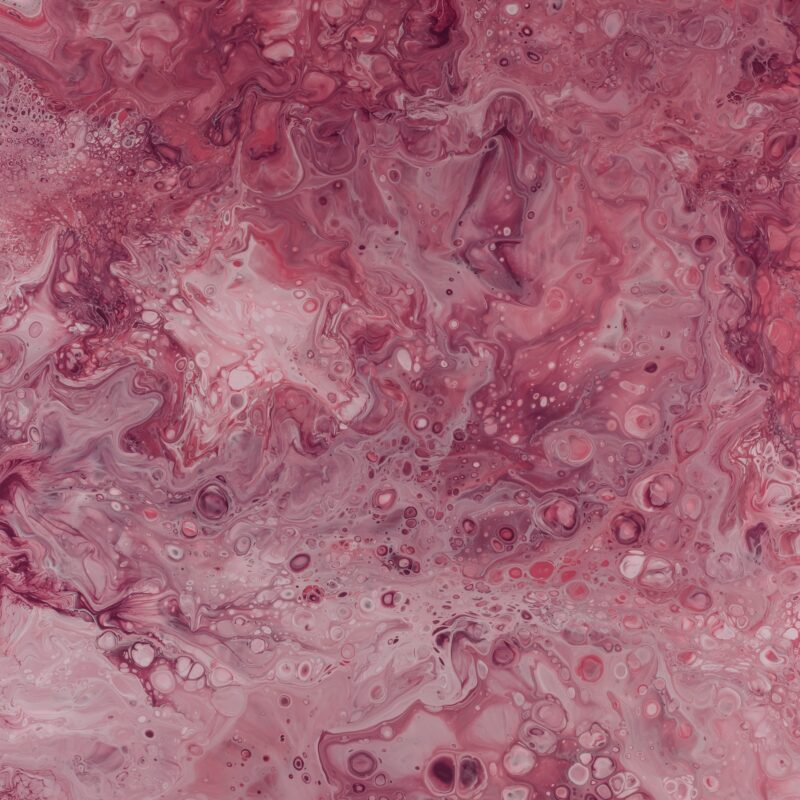As evidence shows, rosacea is much more than a dermatological condition. Given this knowledge, could any further clues or physiological differences be found in the blood of those suffering from rosacea? During my journey, I underwent several blood tests to check for any potential autoimmune diseases due to my wide-ranging symptoms aside from rosacea. Thankfully, although the results did not uncover any health issues, receiving a full breakdown of test results inspired me to look further into any potential relationship between components of the blood and rosacea. This post will focus on the possible markers found in the blood and their relationship to the skin condition, including immune health. Additionally, this post will look at the benefits and potential downsides of rosacea sufferers having blood tests to check for autoimmune issues.
What Are the Benefits of Blood Tests?
Blood tests provide an in-depth view of overall health. This procedure is highly beneficial, particularly when looking into the inner workings of the human body. In terms of rosacea, blood tests are not commonplace (only in circumstances where autoimmune issues are suspected). Despite this, it is still interesting to learn about the possible links between skin conditions and blood composition.
When screening for autoimmune problems, blood tests look for the presence of antibodies circulating in the blood. Antibodies are specialist proteins that travel through the bloodstream, utilised by the immune system to identify and defend against foreign invaders to the body. To test for antibodies, or more specifically, antinuclear antibodies (ANAs), a precise range of blood tests are required.

How Are Antibody Blood Tests Conducted?
For the patient, these specific blood tests are done just like any regular blood test. The differences lie within the processing of blood samples in the laboratory. The different test tubes denote which blood components are due to be investigated. You may have wondered why the tops of the test tubes have coloured lids and the reasoning behind the colour coding. For further information on haematology and blood tests, this article provides a breakdown of the scientific principles.
Are There Any Concerns When Testing for Antibodies?
Of course, there are caveats to be aware of when testing for the presence of antibodies, as antinuclear antibodies (ANAs) can often be discovered in perfectly healthy individuals. There is the potential for unnecessary investigations (and even treatments for autoimmune conditions) if results illustrate the presence of antibodies. This article backs up this notion and also explains the clinical significance of antibody results.

Interpreting Results
After a whole host of blood tests, the results caught my attention, sparking curiosity within. Although they were considered normal, with no further action required, I asked for a complete breakdown from the laboratory that showed the following.
Of course, with medical testing, results are typically positive or negative but, with antinuclear antibody testing, two types of results exist:
- The titre – gives an estimate of how many antinuclear antibodies are present.
- The pattern – a variety of different patterns are present in antinuclear antibodies.
A sample of the liquid component of the blood (known as the serum) is watered down with diluent. One part of the serum is reduced into 40 parts of diluent (referred to as 1:40 titre). The watered-down sample is assessed for the existence of antinuclear antibodies. If positive, the process is repeated, and a new sample is then formed at half strength (1:80 titre) and again tested for ANA. Every time the test is positive, the test is repeated by further diluting the sample into 1:160, 1:320, 1:640, 1:1280, and 1:2560.
The second phase of ANA testing involves looking at the pattern. Certain staining patterns can be linked to specific autoimmune conditions, although results are not always disorder-specific. There are five distinct patterns of fluorescence.
- Homogenous: this is the most common, where the entire nucleus fluoresces.
- Rim: the outside of the nucleus shows up under fluorescence.
- Speckled: a speckled pattern is observed and can be either fine or coarse.
- Nucleolar: where the nucleolus fluoresces.
- Cytoplasmic: the fluorescence occurs outside the nucleus (the centre of cells).
What Does a Positive Result Mean?
A positive result means there are antibodies in the blood, although it is not a strong indicator of autoimmune disease. A positive test result will often require further testing to assess if more specific autoantibodies are present. This article from The Journal of Family Practice illustrates which staining pattern pertains to specific autoimmune conditions. The higher the titre, the more serious the disease. This method is sensitive, so it is unlikely that results in the lower titres are conclusive, suggesting an immune system disorder.

Was There Any Significance In My Results?
My autoimmune profile came back as weak positive at a titre of 1:80, with an ANA pattern homogenous and speckled. The results were borderline and non-specific (as is often the case with a speckled pattern). HealthTap forum discusses the possible meanings behind such ANA results.
Given results were intriguing, was there any cause for concern? To my great relief, a follow-up appointment with a rheumatologist confirmed I was not suffering from any autoimmune disease. Despite the positive news, it did make me wonder what could be causing the results; were genetic or environmental factors involved? And if so, what could I do to calm down my immune system, with the primary goal being improving my skin and random symptoms? Even more perplexing was the thought that I could be on the brink of an autoimmune condition, which gave me the impetus to research further whilst adopting a ‘whole approach’ to improve overall health.
What Do Blood Test Results Typically Show In Rosacea Sufferers?
As a possible link between rosacea and antibodies in my blood existed, does any evidence prove such a theory? And are there any similarities observed in the blood test results of rosacea sufferers?
Several studies focus on the blood test results of those suffering from rosacea. One such study found that it is not uncommon to find elevated levels of antinuclear antibodies in those with rosacea and is discovered more often in females than males. To confirm the presence of autoimmune disease in rosacea sufferers, more specific antibody tests or a skin biopsy would be beneficial to distinguish between rosacea and conditions with overlapping symptoms, for example, lupus and the characteristic butterfly-shaped facial rash.

So, Does a Link Between Autoimmunity and Rosacea Exist?
Determining possible causality between rosacea and autoimmunity is not an easy feat. Results show that rosacea sufferers will more often than not have antinuclear antibodies in their blood, which adds to the complexities. This informative article states that lifestyle and environmental factors could determine why rosacea sufferers are more prone to certain conditions of the autoimmune variety. Additionally, genetic research has discovered a tentative link between inherited genes, rosacea, and autoimmune disorders. Females with rosacea have an increased rate of autoimmune conditions such as type 1 diabetes, coeliac disease, and rheumatoid arthritis. Diversely, men are more prone to suffer from rheumatoid arthritis rather than other disorders. Rosacea could indicate autoimmune problems, but there is not a great deal of understanding in this area.

Why Is There Such a Disparity Between Men and Women In Autoimmune Disorders?
As rosacea is more common in women, there is an increased chance of developing an autoimmune condition. The immune systems in women are more reactive (with the potential for being overactive) due to hormones, for example, oestrogen.
There are certainly similarities in the higher levels of antinuclear antibodies in rosacea sufferers (compared to those without). Despite this finding, it is crucial to determine whether this pertains to any clinical significance as healthy individuals can present with antibodies which do not necessarily mean autoimmune conditions exist or are a definite precursor to future health concerns. I think it is good to be aware of the potential link but not become overly worried. Of course, if you have any worries, it is always best to consult a medical professional. Ultimately, the most balanced approach is to be aware of the possible risks, take care of your immune system, and aim to keep internal inflammation to a minimum for optimal health.
Dotinga, R. (2016) ‘More Evidence of Rosacea, Autoimmune Link’, Dermatology Times. [Online].
Available At: https://www.dermatologytimes.com/view/more-evidence-rosacea-autoimmune-link
Accessed: (28 July 2021).
HealthTap Forum 'ANA Homogenous Speckled Pattern' (n.d.) [Online].
Available At: https://www.healthtap.com/q/ana-homogeneous-speckled-pattern/#:~:text=Probably%20nothing%3A%20An%20ANA%20of%201%3A80%20is%20borderline,questions%20or%20offer%20you%20advice%2C%20prescriptions%2C%20and%20more.
Accessed: (27 July 2021).
Monash Health (2020) 'Blood Tube Guide and Order of Draw Reference Chart'.
Available At: https://handbook.monashpathology.org/downloads/tube-type.pdf
Accessed: (30 September 2021).
Rehman, H. (2015) ‘Anti-nuclear antibodies: When to test and how to interpret findings’, The Journal of Family Practice, vol. 64 (1) [Online].
Available At: https://cdn.mdedge.com/files/s3fs-public/issues/articles/JFP_06401_ArticleW1.pdf
Accessed: (27 July 2021).
Rheum Doctor (2016) ‘What is a positive ANA and what does it mean?’. [Online].
Available At: http://rheumdoctor.com/what-is-a-positive-ana/
Accessed: (27 July 2021).
Wozniacka, A., Salamon M., McCauliffe, D. And Jedrzejowska, A. (2013) ‘Anti-nuclear Antibodies in Rosacea Patients’, Advances in Dermatology and Allergology, (1), pp. 1-5.
Available At: https://www.termedia.pl/Original-paper-Antinuclear-antibodies-in-rosacea-patients,7,20283,1,1.html
Accessed: (28 July 2021).
